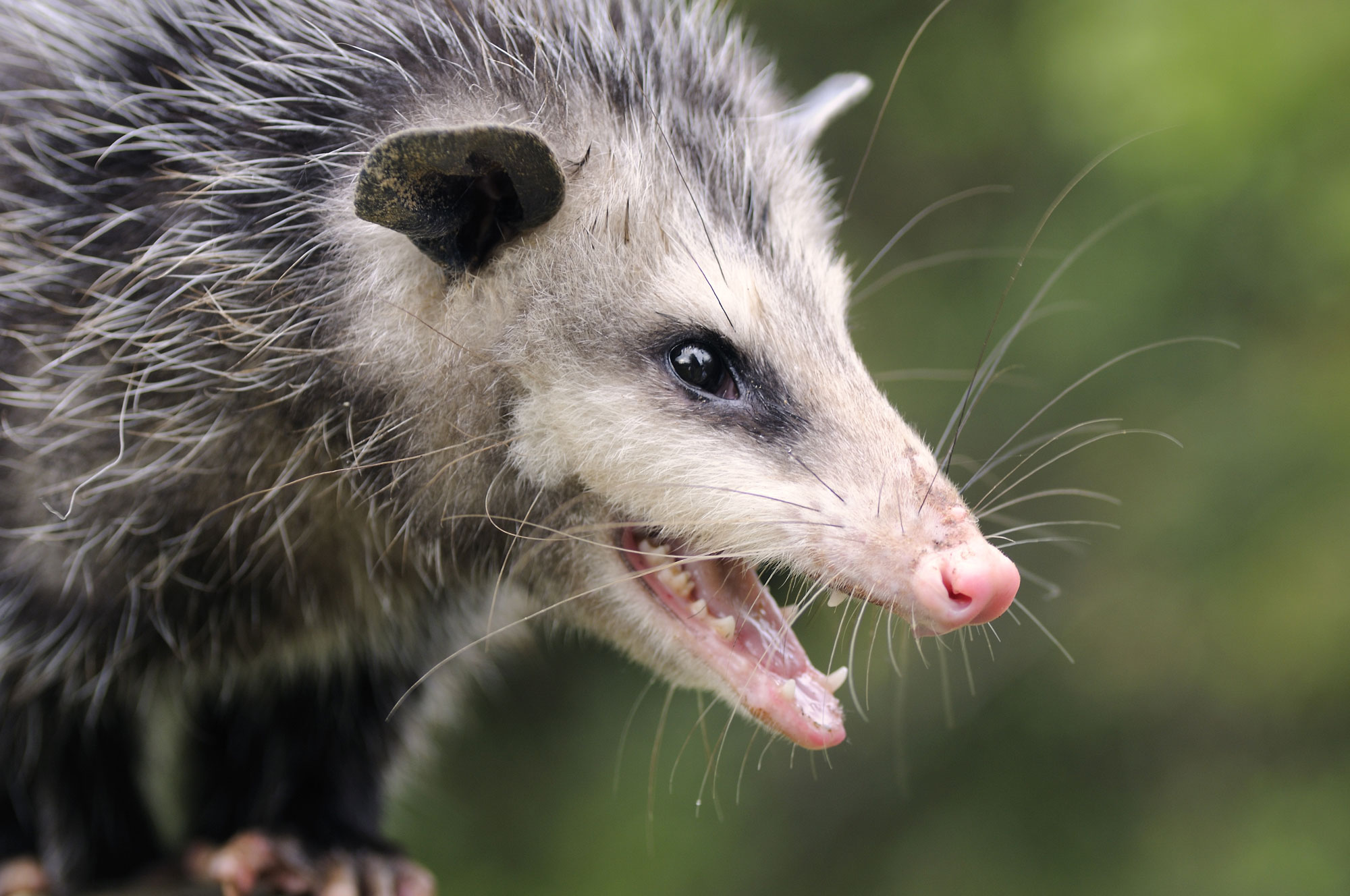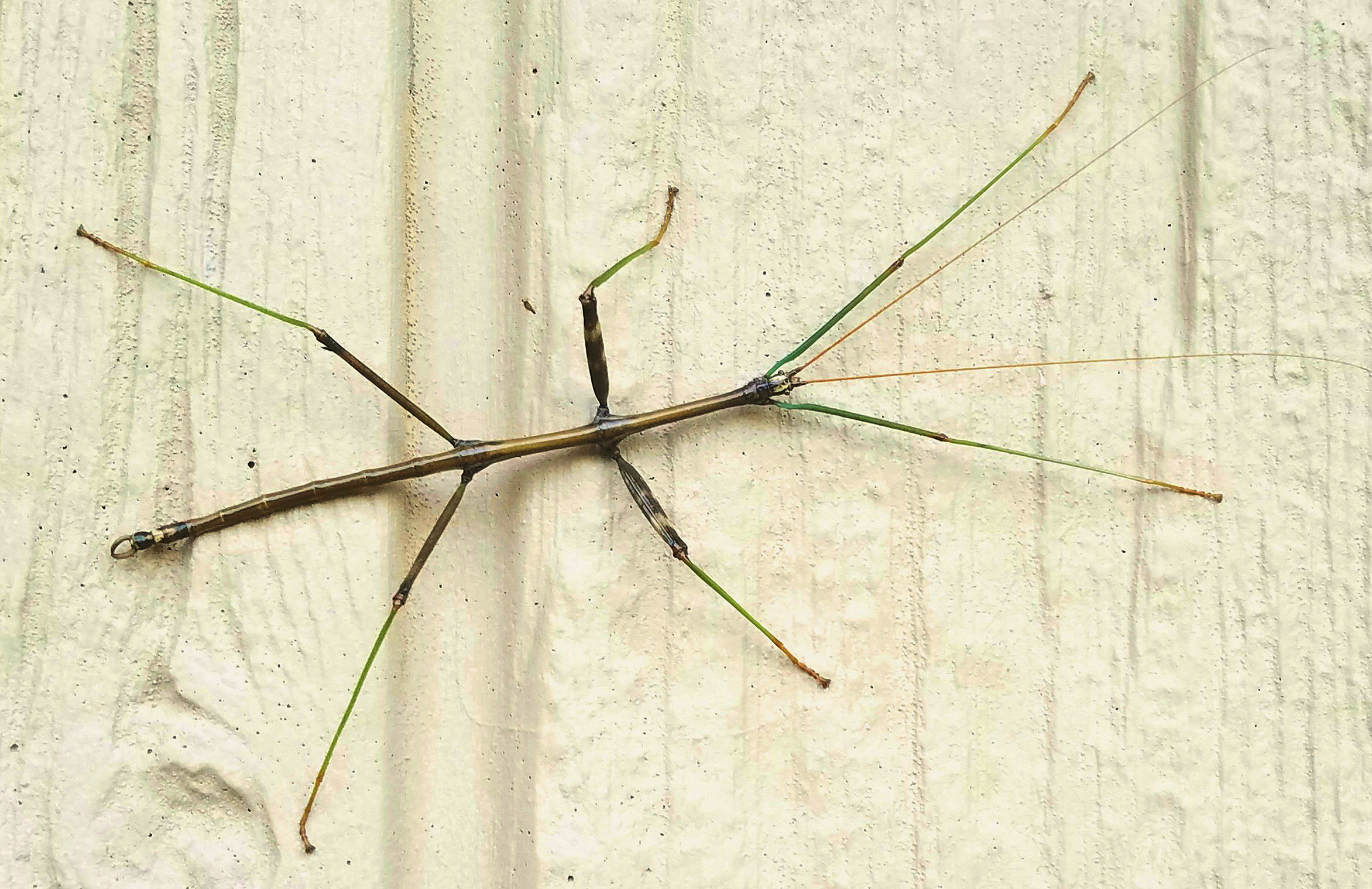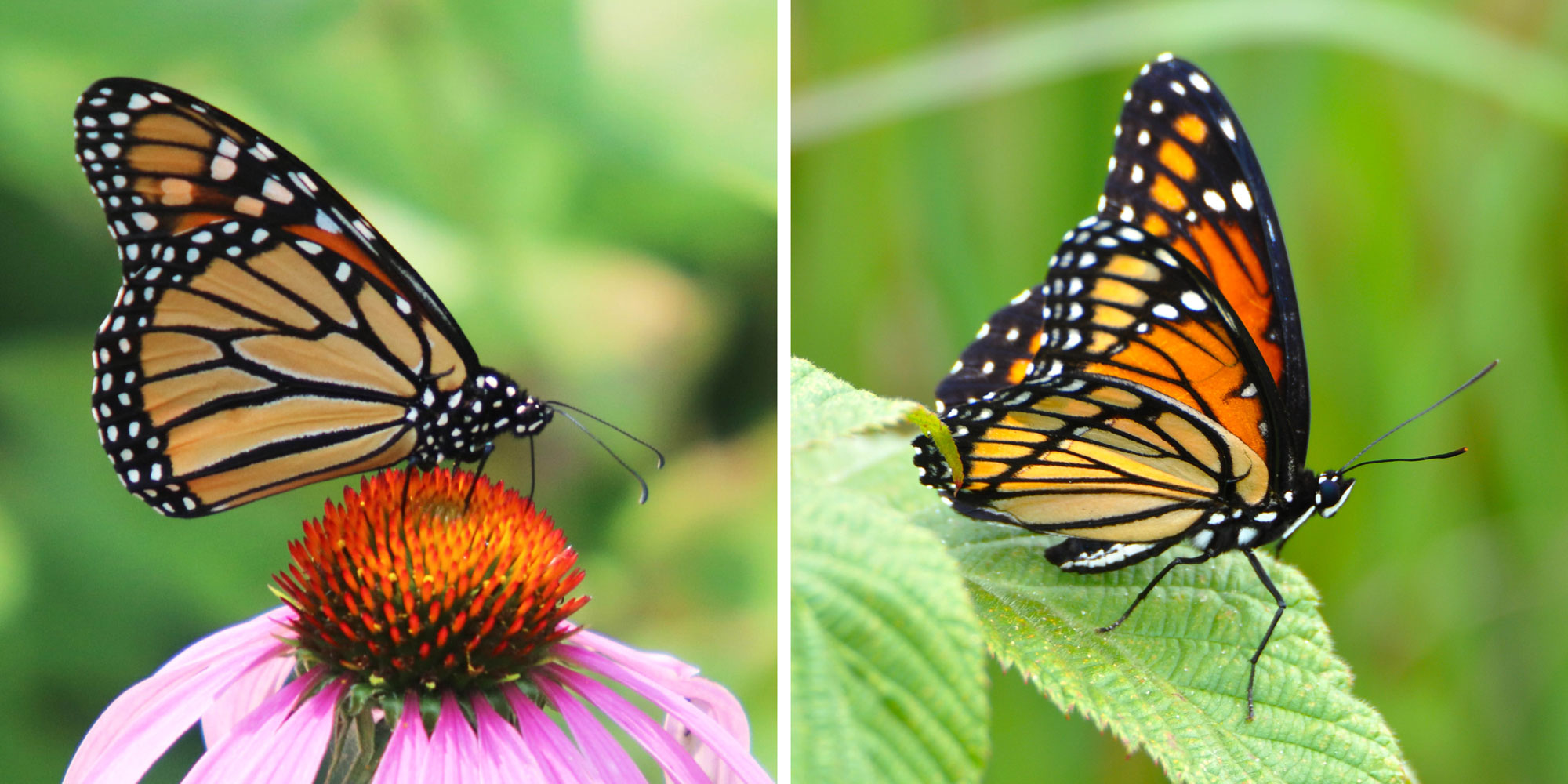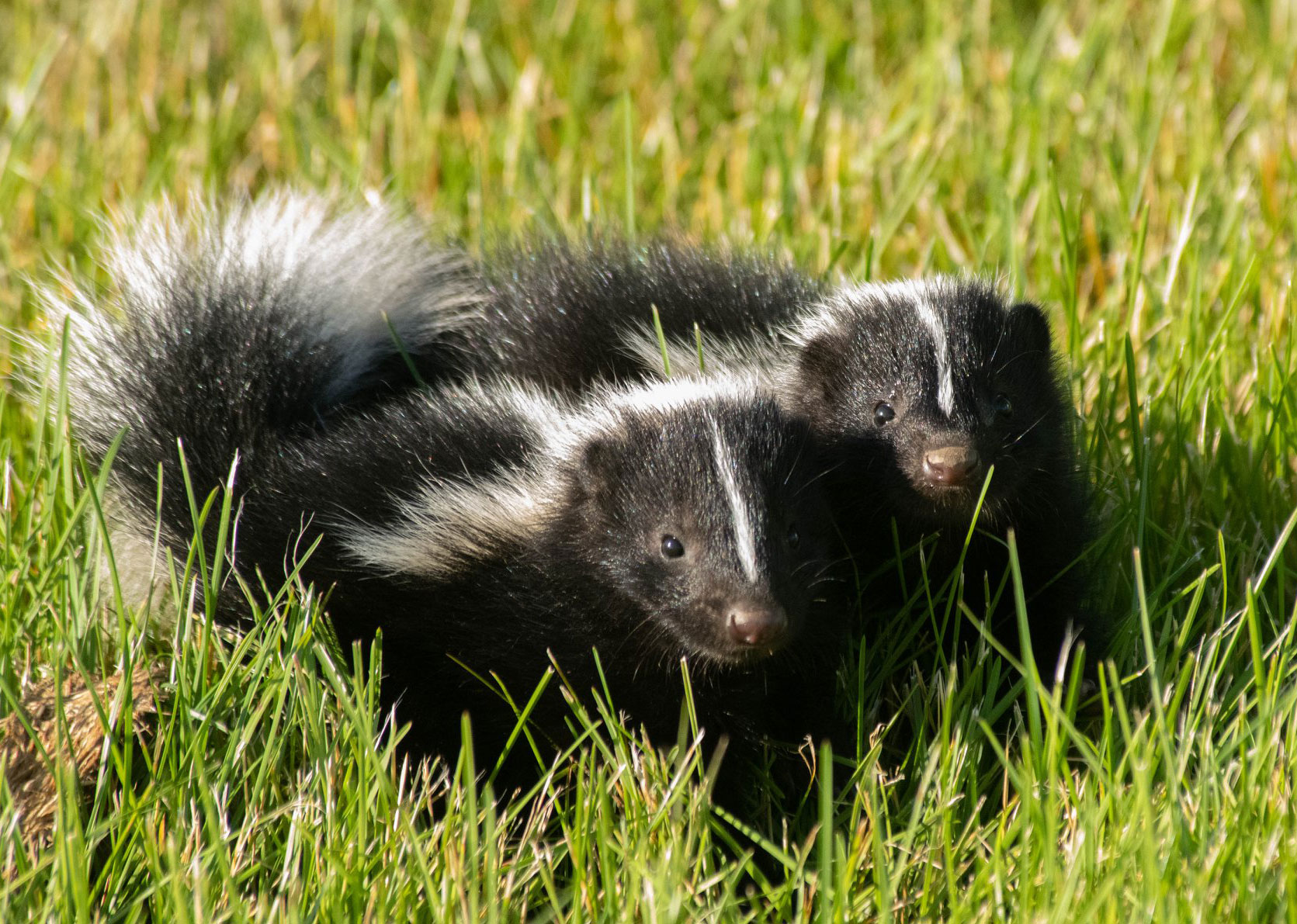What Animals Use Mimicry To Protect Themselves In South America
| Story by Meghan McMahon |
ix/9/2019
Humans have evolved into sophisticated creatures, with a corking sense of intelligence that unremarkably keeps us safe from danger. Wild animals also take developed strategies to continue them prophylactic from danger. For some, these defense mechanisms are crucial to surviving in the wild.
Some of these means of protecting themselves are well-known and obvious — you've probably smelled the presence of a nearby skunk without ever seeing it. Others are more than subtle, and some are downright baroque.
For example, some species of ants that alive in Asia volition explode to protect the colony. This protective action kills the ant, but it can save the colony from danger, according to Female parent Nature Network.
The Texas horned lizard will eject blood from its eyes at a predator to keep itself safe. And a sea cucumber will shoot its digestive organs out its anus to protect itself. In some cases, the sea cucumber'south intestines tin be poisonous to predators. Sometimes, though, it'due south just a clever way of disarming a predator information technology is dead.
These defense mechanisms may seem wild, but the animal kingdom is full of bizarre behaviors that animals engage in to keep themselves safety. Here'south a wait at some of the defense force mechanisms used past animals you might see in your own backyard.
Opossums
)
Photo via Shutterstock
Opossums are notorious for playing dead, and they are very good at it. But information technology's not really an act. That is, they don't actively make up one's mind to play expressionless. It'due south an involuntary response that is more like fainting, according to the San Diego Zoo.
When an opossum plays dead, it bares its teeth, foams at the mouth and secretes a fluid from its anal glands that gives off a bad smell. All of these things add to the look of it being dead, helping to keep predators at bay. It can remain in this catatonic country for a few minutes or a few hours.
Opossums are the brute about famed for playing expressionless, but they aren't the just 1. Take the western hognose snake, for instance. These snakes, which are predominantly found in the western United States, could win acting awards for faking their own deaths. They start past having spasms and then rolling over, according to the National Wild animals Foundation. So they either vomit or expel blood from their mouths, finishing off the functioning by defecating and emitting a pungent musk from its tail. This dramatic operation is usually enough to ship potential predators off in another direction.
Walking sticks
)
Photo past Michelle Blackburn
Camouflage is a well-known way for animals to protect themselves from predators, just perchance no beast in the animal kingdom is every bit good at it every bit walking sticks. More than iii,000 species of these insects exist beyond the world, and their stick-like appearance serves them well in hiding from potential predators. They are normally dark-green or brown in colour to blend in with the twigs they disguise themselves as, co-ordinate to the National Wild fauna Federation.
Stick bugs don't simply look like sticks; they act like them also. They tin be hard to the touch, like a stick or twig would be. And to assist them blend in, they will sway in the wind simply similar the twigs on a tree would practice.
These masters of camouflage have some contest in the animate being kingdom when it comes to blending in with their environment. The patterns in the plumage of several owl species, including the great horned owl, provide excellent encompass for sitting in a tree. And many insects, lizards, frogs and snakes too have coloring that allows them to blend in rather than stand up out. And our oceans are full of creatures – from fish to seahorses to crustaceans – that blend into their environment then as not to telephone call attention to themselves.
Monarch and Viceroy butterflies
)
Photos from left to right: Monarch butterfly courtesy of Ronald Kapala; Viceroy butterfly past Glenn P. Knoblock
Some animals protect themselves from predators past looking very similar to another animal, a practice called mimicry. Among the best known examples of this is viceroy and monarch butterflies, which look strikingly like except for one black stripe viceroys have on their hind wings that monarchs exercise not have.
Both types of butterflies eat plants that contain baneful compounds that make them taste bitter to predators, co-ordinate to Salve Our Monarchs. This bitter taste keeps predators at bay, and in this case the butterflies get double the protection considering predators volition stay away from both monarchs and viceroys because of their similar advent. These collywobbles are an example of Mullerian mimicry, in which ii (or more) noxious animals have like physical appearances as shared protection confronting predators of both animals.
Some other type of mimicry is called Batesian mimicry, which is when a non-toxic animal evolves to have a strikingly similar appearance to a toxic beast to protect it from predators. This form of mimicry was outset noticed among butterflies in the Amazon, according to PBS. Closer to home, Batesian mimicry is used by the non-venomous scarlet kingsnake, which looks then similar to the venomous coral snake that it can be hard to differentiate betwixt the 2.
Both the cerise kingsnake – which is completely harmless to humans – and the coral ophidian – which is deadly, although it rarely bites humans – have red, yellow and blackness bands. The departure is that the yellow and scarlet bands are side by side to each other on a coral snake, while a black band always separates the yellow and reddish bands of a scarlet kingsnake, according to the Florida Museum. This subtle distinction has given rise to a clever rhyme: Cerise touches yellow, kill a fellow. Ruddy touches black, friend of Jack.
Turkey vultures
)
Photo via Shutterstock
If y'all happen upon a turkey vulture devouring a repast, it's best to requite it plenty of space. Why? Considering these birds will vomit up the contents of their stomachs to keep from being harassed or disturbed, according to the Washington NatureMapping Program.
Turkey vultures mainly consume carrion, or the carcasses of dead animals, which ways their stomach contents may be a petty more vile than most creatures'. And they can boost their breadbasket contents pretty far – up to 10 anxiety away. Even the young vultures are well-versed in vomiting to keep potential predators abroad.
Vultures aren't the only creature to vomit to defend themselves from predators. European rollers are sometimes called "vomit birds" because the young birds will throw up a putrid, orangish liquid to make themselves less flavory to predators. The vomit also provides an olfactory cue to their parents that the nest is under attack.
And camels are famous for spitting, which is really just a way for them to protect themselves. The "spit" is actually more similar vomit – a combination of their stomach contents and saliva – that they employ to distract or bother whatever happens to get also shut for condolement.
Skunks
)
Photograph courtesy of Joyce Flanagan via Will Canton Wildlife
The stinky spray of a skunk is one of the nearly well-known brute defenses in that location is, merely it's usually used equally a last resort by these striped animals. A skunk will first try less odiferous ways of keeping a potential predator at bay. It may commencement by hissing and stomping its feet, co-ordinate to the Smithsonian Constitute. If that doesn't ship a predator scampering, the skunk will arch its back and lift its tail.
If all else fails, a skunk will deliver a spray of its pungent musk. The musk is contained in anal glands that have nipples so the skunks can precisely direct their spray, which tin attain distances of ten feet or more than, according to the National Wildlife Federation. The spray may crusade an unsuspecting fauna's eyes to water and sting, merely it leaves no lasting damage – although the olfactory property can linger for days or even weeks.
Skunk spray is the nearly effective foul-smelling defense – it can be smelled more than a half-mile abroad – just plenty of animals utilise similar means of keeping potential predators at a safe distance. Have minks, which are related to skunks. They likewise secrete a bad-smelling musk from their anal glands when threatened, but it's not nearly as powerful and potent equally that of a skunk, co-ordinate to Female parent Nature Network. Stink bugs secrete a evil-smelling fluid, and bombardier beetles will release a foul-smelling secretion that can as well burn and irritate the skin to defend itself. Similarly, millipedes will also emit an odiferous secretion that will also irritate the peel when threatened.
Lead paradigm via Shutterstock
Source: https://www.reconnectwithnature.org/news-events/big-features/wild-ways-animals-protect-themselves/
Posted by: walkerwhoduch.blogspot.com

0 Response to "What Animals Use Mimicry To Protect Themselves In South America"
Post a Comment